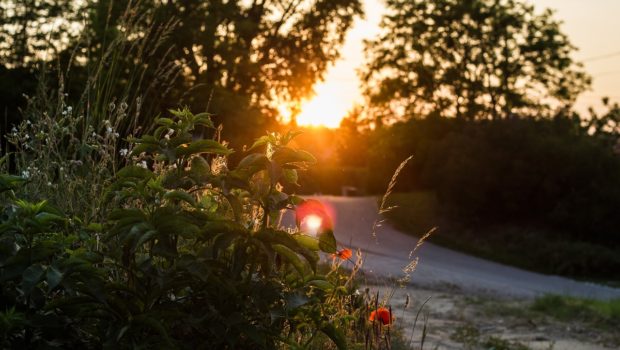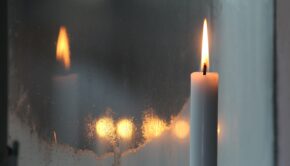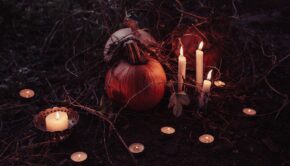Noah and Our Embodied Wisdom
This week’s Torah portion, Noah, starts out (Genesis 6:9) with one of those extra words that rabbis and commentators just can’t leave alone: we’ve got to understand why the Torah put in an extra word when it didn’t need to. “This is the line of Noah: Noah was a righteous man…” In the unpunctuated Torah, it reads: “This is the line of Noah Noah…”
One of my most beloved rabbis is Rabbi Kalonymus Kalman Shapira (1889 – 1943). Also known as the Piazetzner Rebbe, or the Rebbe of the Warsaw Ghetto, he was a revered rebbe, teacher and spiritual master who stayed with his people in the ghetto, continuing to teach and offer comfort throughout the war. In a book that he wrote before the war, Derekh HaMelekh (The Royal Road), he comments on this doubling of Noah’s name – it signifies, he says, the ability that people have to create a new self by drawing down spiritual wisdom literally into our bodies. In other words, we each have a spiritual self, floating in potentiality, but we can make a “copy” of that spiritual self and make it manifest on our physical selves.
He uses the analogy of writing on a piece of paper: when you write with a pencil on white paper, then erase it, it leaves a residual mark. A bit of the whiteness is overwritten, even after the writing is erased. So, he says, when we have deep spiritual experiences (he uses the examples of prayer or learning Torah, but I think it would apply also to meditation, experiences in nature, helping others or any true spiritual activity), even when those experiences are over and we go back to our normal lives, they can leave a “residue” that overwrites a bit of our egos.
The essential requirement for this to work, however, is that the spiritual activity must penetrate all the way into our bodies. It can’t just be a “head” experience. When we are in prayer, for example, if it’s just in our heads, even if we really believe what we are saying, but it doesn’t penetrate to our bodies, it won’t create that residue that transforms us. He uses the analogy of someone who hasn’t seen their child for a long time: when that child finally walks into the room, we forget about eating or sleeping or physical pain, we just want to hug them and hold them.
Rebbe Shapira says that this kind of knowledge, which penetrates our whole bodies, creates one of the characteristics of the Tzadikim – the Righteous – their faces actually shine with the wisdom of Torah. And, it doesn’t stop there: this kind of embodied wisdom spreads out to those who hear the words from such a teacher. It’s a communicable condition.
This is the reason, he says that Jews don’t just pray in our heads, but we are required to actually say the words, at least so our own ears can hear what our mouths are saying. The act of putting the words into our mouths helps to get them into our bodies. We also often sway and move as we pray or learn Torah – this movement helps to fulfill the biblical verse, “All my bones shall say, “Lord, who is like you…” (Psalms 35:10).
When we draw down our spiritual self, our hidden spiritual wisdom, into our bodies, it isn’t just making a copy. So much more is added. Shapira notes how when you have an idea in your head, and then you tell it or write it, often the idea will change: new insights come out when we involve our bodies in the creative process. I have had this experience many times in writing, but also in drama – acting out a biblical scene or a midrash can add so much to our understanding of its meaning – or in drawing, dance, yoga, or other embodied practices. It is the nature of spiritual knowledge to manifest in new and exciting ways when we draw it into our bodies and into the physical world.
One of the most exciting things I get from studying the Torah of the Piazetzner Rebbe is that he teaches me so much about the organic nature of Torah. The Torah was not given to the angels because it needs to manifest in our world, a world of living, growing, changing beings. In our spiritual ecosystem there is a mutual dependence of the spiritual and the physical such that neither can thrive without the other, and that mutual dependence teaches us about our mutual dependence on one another. We can’t thrive without each other.
This is why I’m starting a practice of opening up our home on Shabbat afternoons toward sunset, to anyone who wants to come and study Torah, sing some niggunim, have a little nosh of food together with me. We’ll mostly be learning more of what I wrote about in this post: small sections from the book “Derekh HaMelekh.” I’ll try to do this as many weeks as I can – but check the website where I’ll post a note saying whether we’re on this week or not. No need to call ahead. Just come as you are and we’ll learn some Torah together. If you’re in the Boston area, I look forward to seeing you and learning Torah with you!







One Response to Noah and Our Embodied Wisdom